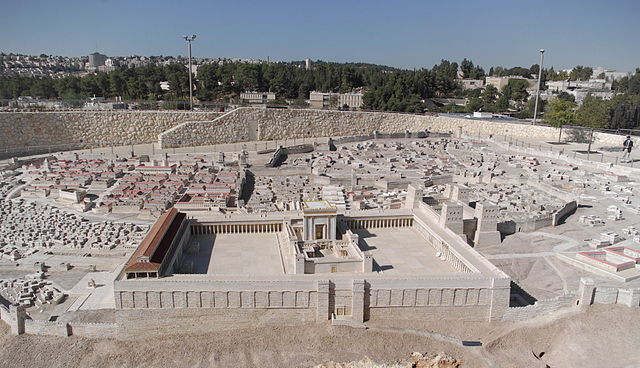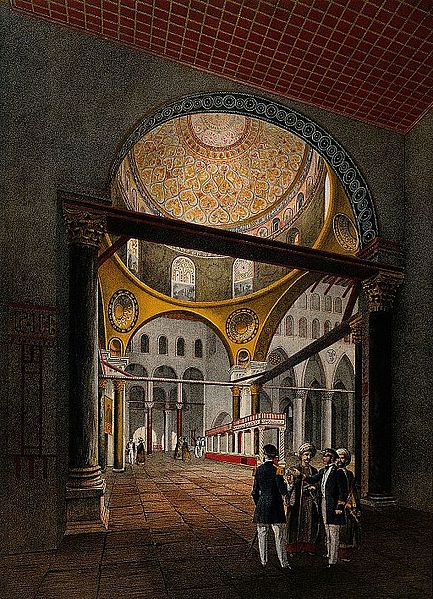The Temple Mount, also known as Haram al-Sharif, al-Aqsa Mosque compound, or simply al-Aqsa, and sometimes as Jerusalem's holy esplanade, is a hill in the Old City of Jerusalem that has been venerated as a holy site for thousands of years, including in Judaism, Christianity and Islam.
Aerial view of Al-Aqsa, atop the Temple Mount
The Holyland Model of Jerusalem depicts Jerusalem during the late Second Temple period. The Temple Mount and Herod's Temple are shown in the middle. View from the east.
Picture showing what is presumed to be the Foundation Stone, or a large part of it
c.300,000 Muslims praying at Ramadan, 1996
Al-Aqsa or al-Masjid al-Aqṣā is the compound of Islamic religious buildings that sit atop the Temple Mount, also known as the Haram al-Sharif, in the Old City of Jerusalem, including the Dome of the Rock, many mosques and prayer halls, madrasas, zawiyas, khalwas and other domes and religious structures, as well as the four encircling minarets. It is considered the third holiest site in Islam. The compound's main congregational mosque or prayer hall is variously known as Al-Aqsa Mosque, Qibli Mosque or al-Jāmiʿ al-Aqṣā, while in some sources it is also known as al-Masjid al-Aqṣā; the wider compound is sometimes known as Al-Aqsa mosque compound in order to avoid confusion.
Aerial view of the Al-Aqsa mosque compound atop the Temple Mount
Southwest qanatir (arches) of the Al-Aqsa. Qubat al-Nahawiyya is also partially visible to the right.
The main mosque prayer hall along the southern wall of Al-Aqsa
A 19th-century chromolithograph of the prayer hall's interior. The mosaic designs on the drum of the dome, the pendentives, and the archway in front of the mihrab date from the mid-11th-century Fatimid reconstruction








